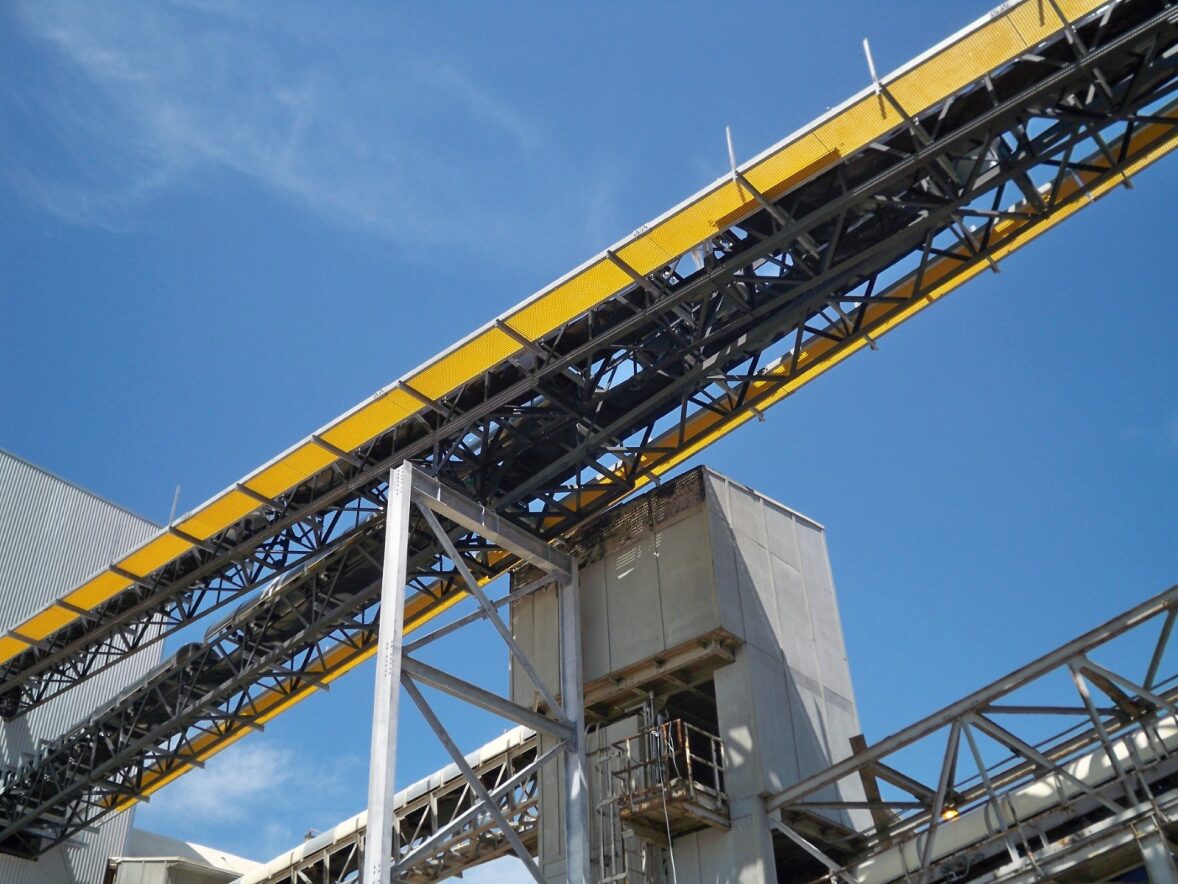Mining is a tough job. From harsh weather conditions to dangerous machinery, mining operations must be able to overcome many unique safety challenges that change on a daily basis. While modern advancements in personal protective equipment (PPE) and safety protocols have been crucial in training and protecting workers before they step foot on the site, there will always be risks that will need to be mitigated.
In the face of diverse safety challenges ranging from slippery walkways, harsh noises, and conductivity risks, mining sites require equally diverse solutions to protect workers and get the job done. For plastics fabricators and distributors, the safety challenges of the mining industry are an opportunity to develop a wide range of durable, reliable products that increase safety, reduce downtime, extend equipment life, and keep operations moving forward. While not the traditional choice over steel products, composite and industrial plastic materials are proven to be safe, cost-effective, and durable solutions to the various challenges facing the mining industry. Below are a few examples of how plastic solutions can increase the safety of mining operations:
Increasing Equipment Life
Reliable, functioning equipment is crucial to safely getting the job done. Unfortunately, vital mining equipment such as trucks, tractors, shovels, and conveyors are frequently damaged by the tough conditions of the mining industry, putting workers at risk. Along with harsh environmental conditions such as extreme temperatures, water, and dust, mining equipment is also frequently damaged by improper usage and the materials they are hauling. This persistent wear and tear will inevitably lead to maintenance and repairs, resulting in increased operational costs and greater safety risks to workers.
One of the greatest strengths of plastic solutions is its wide variety of materials on offer, each with its own unique characteristics and strengths. As equipment can become prematurely damaged from sliding, rolling, abrasion, and impacts, the diversity of plastic solutions provides a great benefit in helping identify the perfect solution to protect equipment. One such material is polyurethane, which excels at absorbing impacts within structures and providing a barrier in the form of bumpers or pads that protect equipment parts that strike together. Other materials such as polyethylene (UHMW) can act as a barrier in the form of liners, protecting truck beds from the materials they are hauling. Rather than purchasing costly new equipment for your site, plastic solutions also provide an opportunity to replace OEM parts with long-lasting plastic grades and formulations.
Despite not being a traditional material like steel, many plastics are seeing a sharp increase in usage within the mining industry. One such example are plastics containing solid lubricant additives with high pressure velocity (PV) values. Often used for bushings and bearings, this material offers excellent wear resistance and requires no startup or running lubrication. This helps tremendously in reducing periodic maintenance and lowering the overall cost of maintenance. Another application seeing increased usage are heavy-duty nylon conveyor rollers made of high-strength composite materials. Highly resistant to corrosion and abrasion, nylon rollers emit less noise and can be up to 60% lighter than their steel roller counterparts. Switching to the heavy-duty nylon conveyor rollers results in a less expensive, easy to install part that protects workers from damaging and distracting noise.
Other applications include belt guides, rollers, sheaves, and pulleys. While traditionally made from steel, their modern plastic counterparts are lighter and longer lasting, resulting in reduced wear and tear on the surrounding equipment. Cast nylon sheaves and pulleys require little to no maintenance, which helps to avoid the potential injuries often associated with routine maintenance.
Increasing Worker Safety
From harsh environmental conditions to dangerous mining equipment, workers face many health and safety hazards during day-to-day operations. Mines must meet strict health and safety standards as a means to reduce the severity and frequency of accidents, minimize health hazards, and promote improved safety and health conditions within mines. Unsafe conditions and substandard worker safety can cause a ripple effect throughout your operations, resulting in skyrocketed insurance costs and negative shifts in investor attitudes.
One of the best examples of the ways in which composite and industrial materials can help protect workers are Fire Retardant Anti-Static (FRAS) additives. Mines are often filled with coal dust, gas, fertilizer, or other combustible materials that can easily be ignited. FRAS additives can be inserted in polyurethane to prevent equipment from producing static electricity capable of igniting the gases and dust present in the atmosphere.
To further improve safety in mining operations, FRP (fiberglass reinforced plastic) grating offers a cost-effective solution to multiple environmental safety hazards present in both underground and above-ground mines. FRP grating material is widely used for a variety of mining applications such as walkways, stairs and structures as it provides a safe, non-slip surface to walk on. FRP grating material is non-conductive, virtually maintenance free and will not rust, making it a safe, stress-free choice for all mining operations. Along with FRP grating, phenolic grating offers a smart alternative to traditional metal grating. With superior resistance to flame and high temperatures, phenolic grating produces low emissions of smoke and toxic fumes.
While many maintenance decision-makers and engineers still doubt the reliability and effectiveness of composite and industrial plastics in the mining industry, these materials have seen a surge in usage due to their effectiveness in extending equipment life and protecting workers. As new and more effective materials are designed and produced, composite and industrial plastics materials will soon be the standard for safe, cost-effective, and longer lasting solutions for many of the challenges faced by the mining industry. With continued education and understanding of the wide capabilities of plastic materials, these materials will unlock safer and more efficient mining operations for all.


